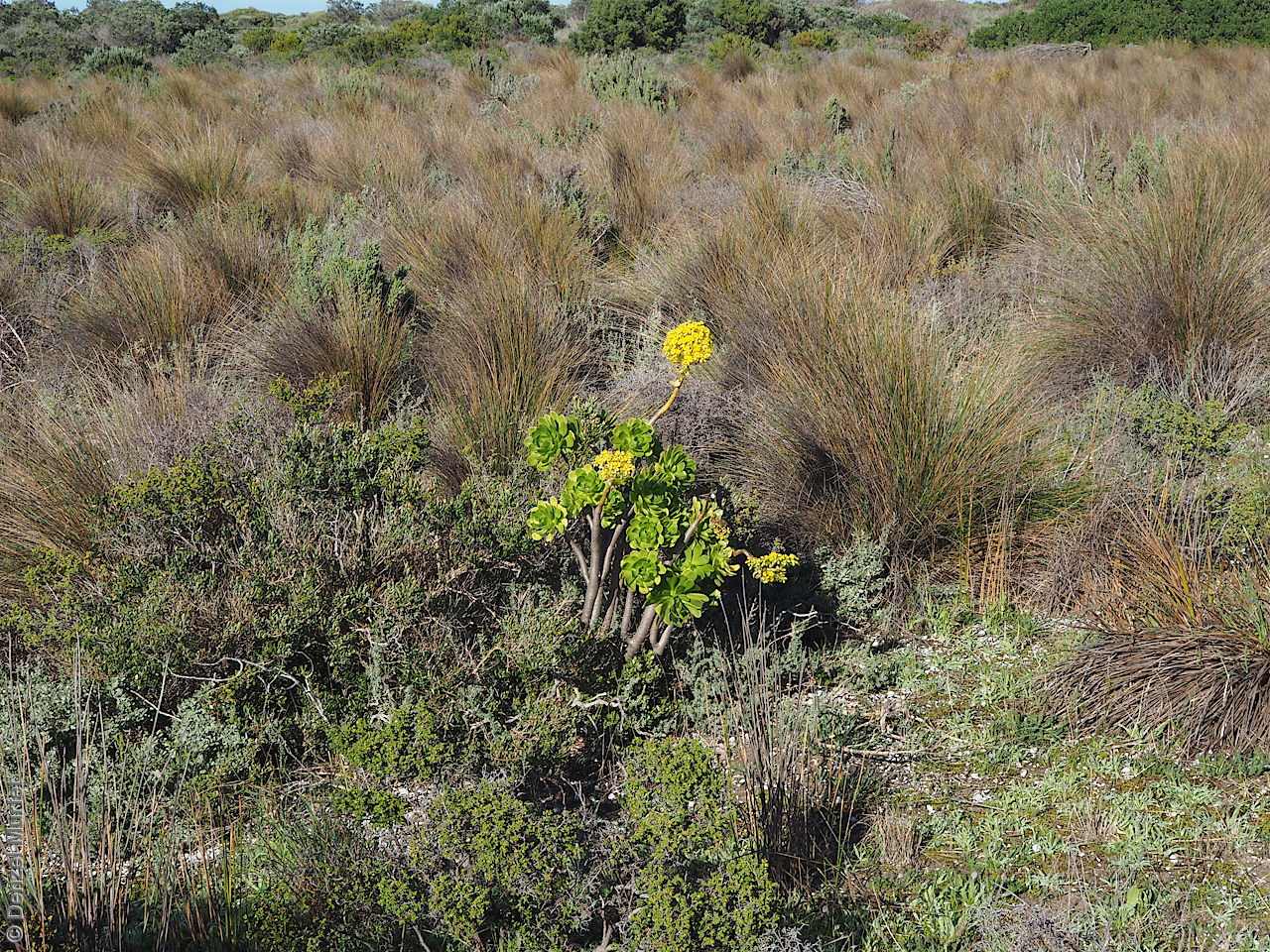
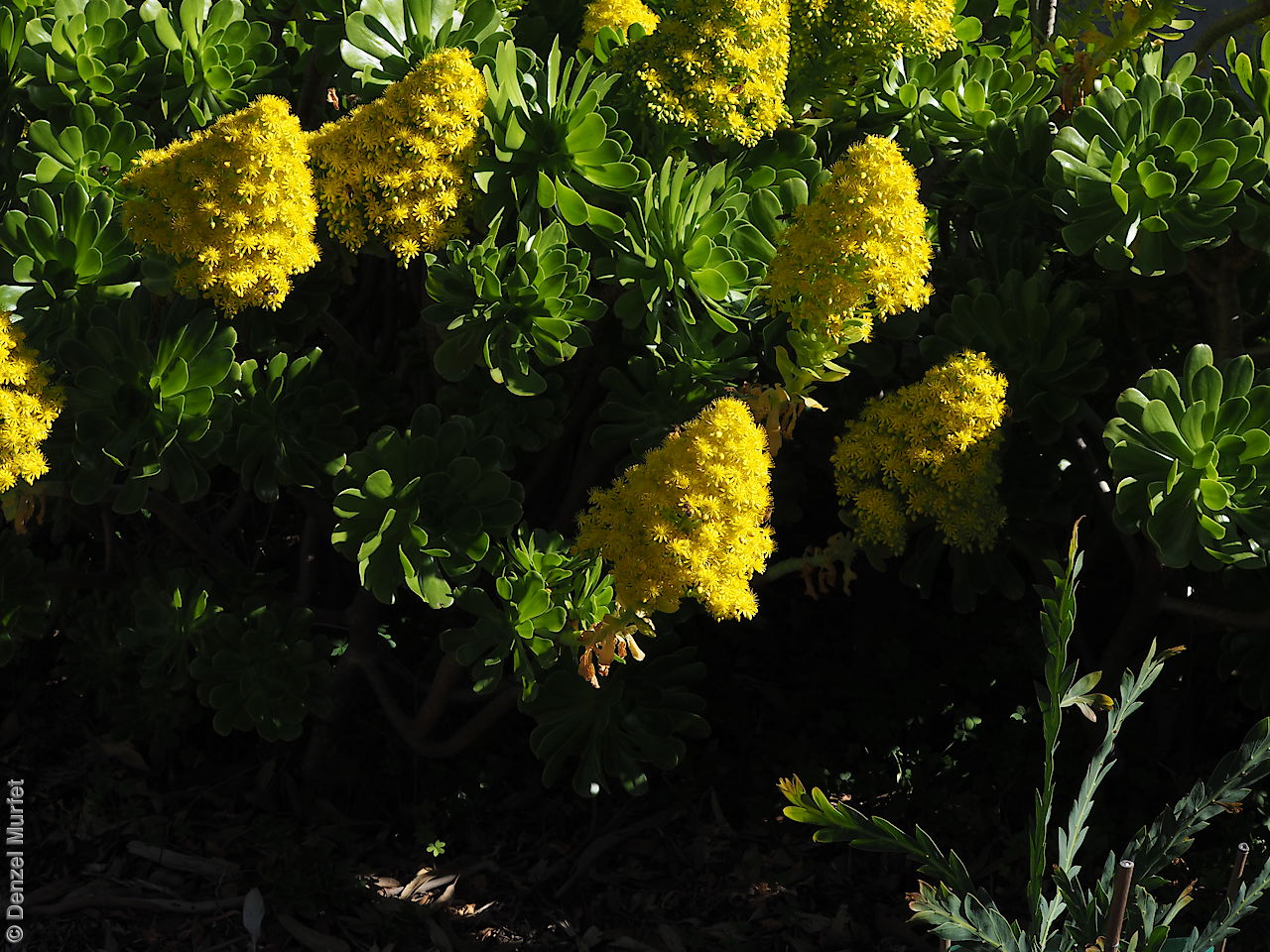
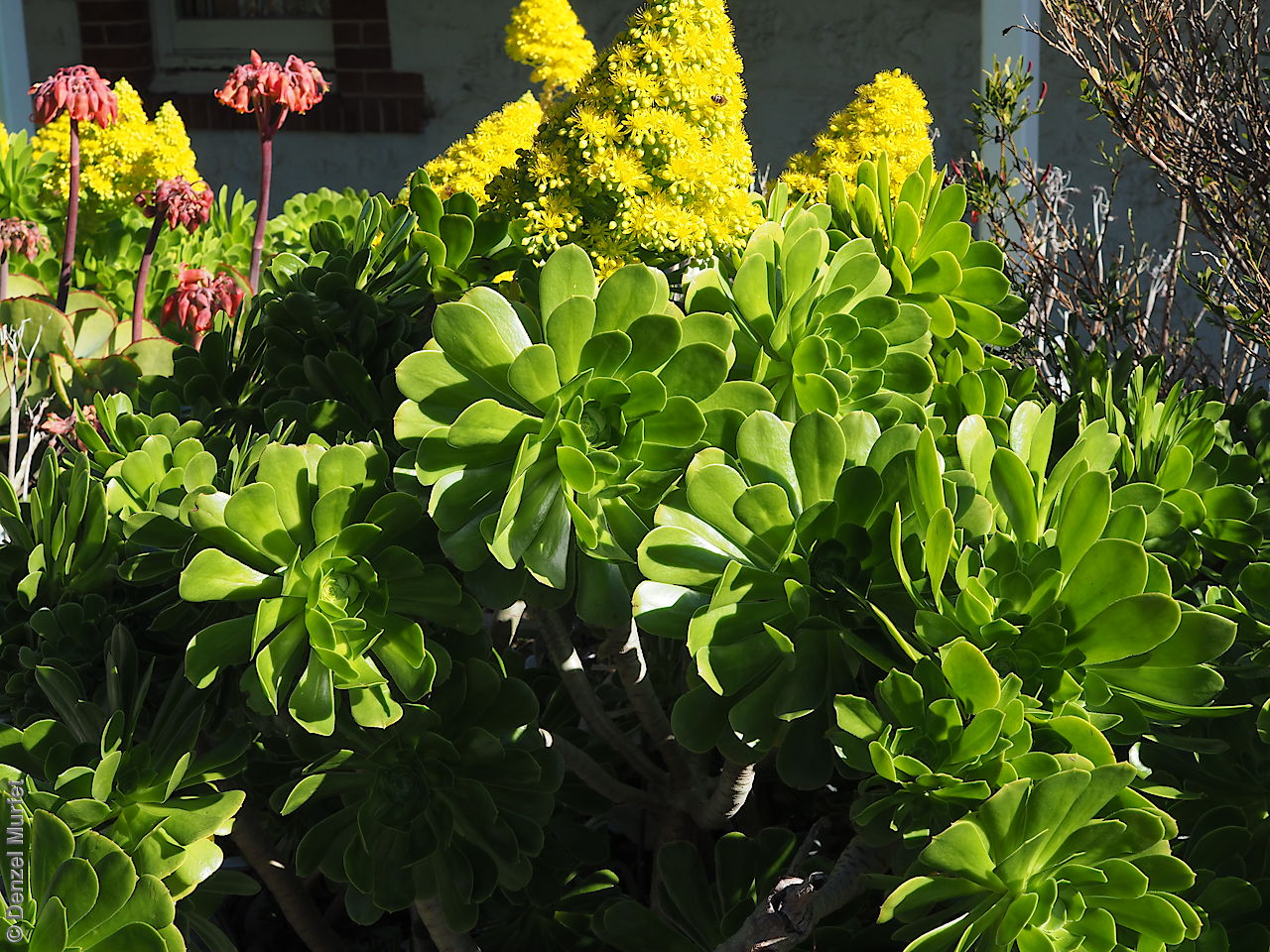
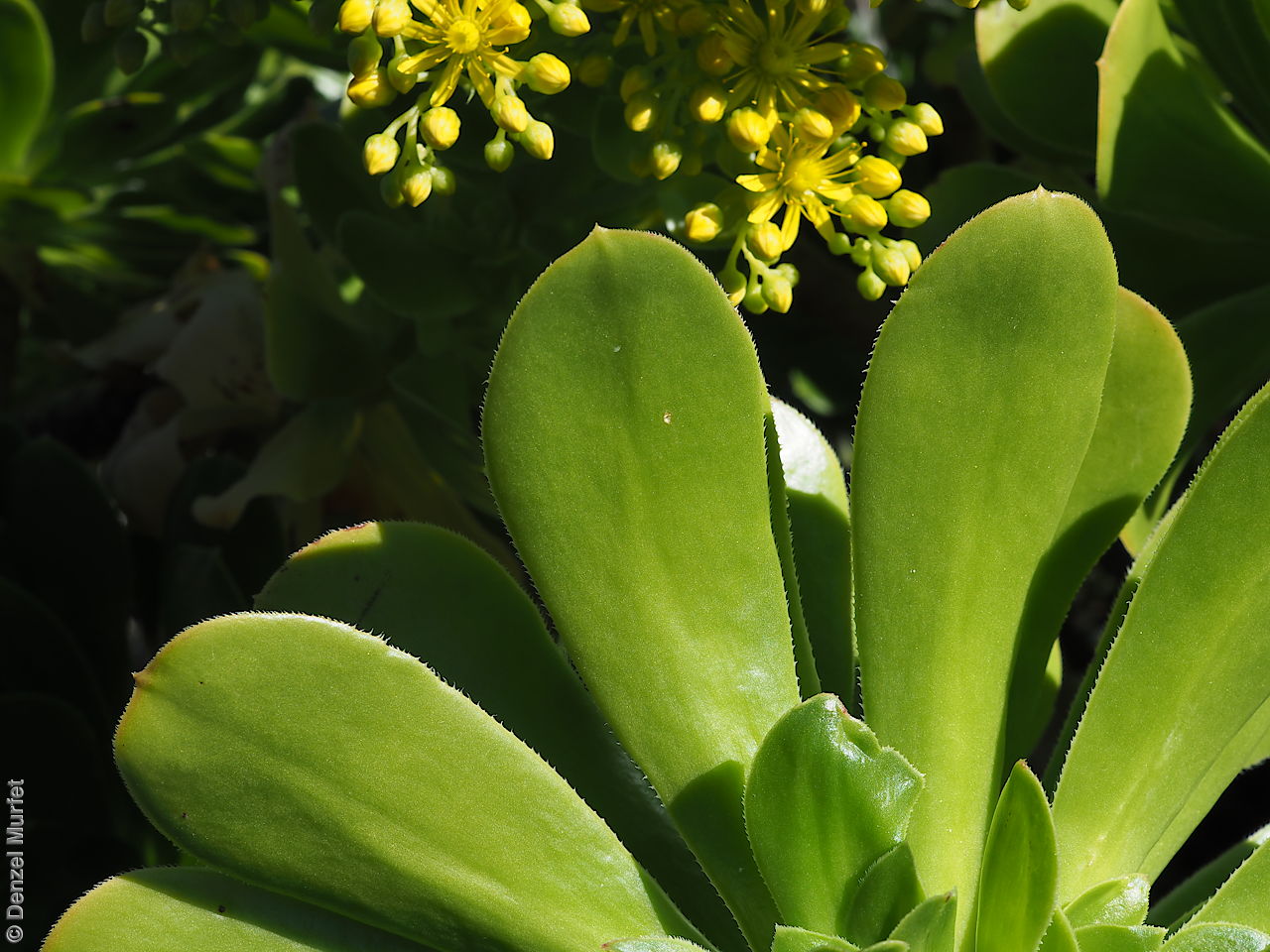

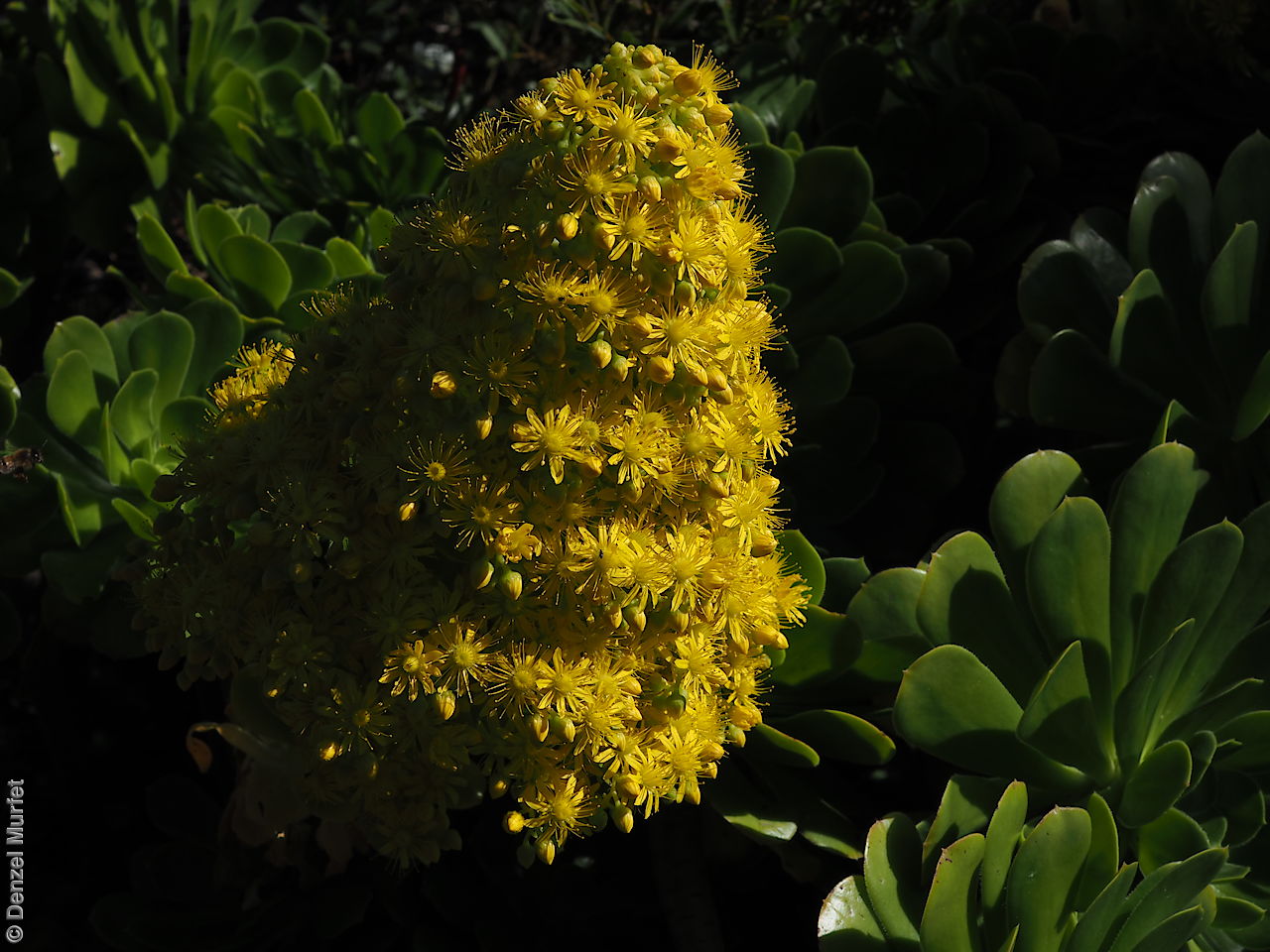
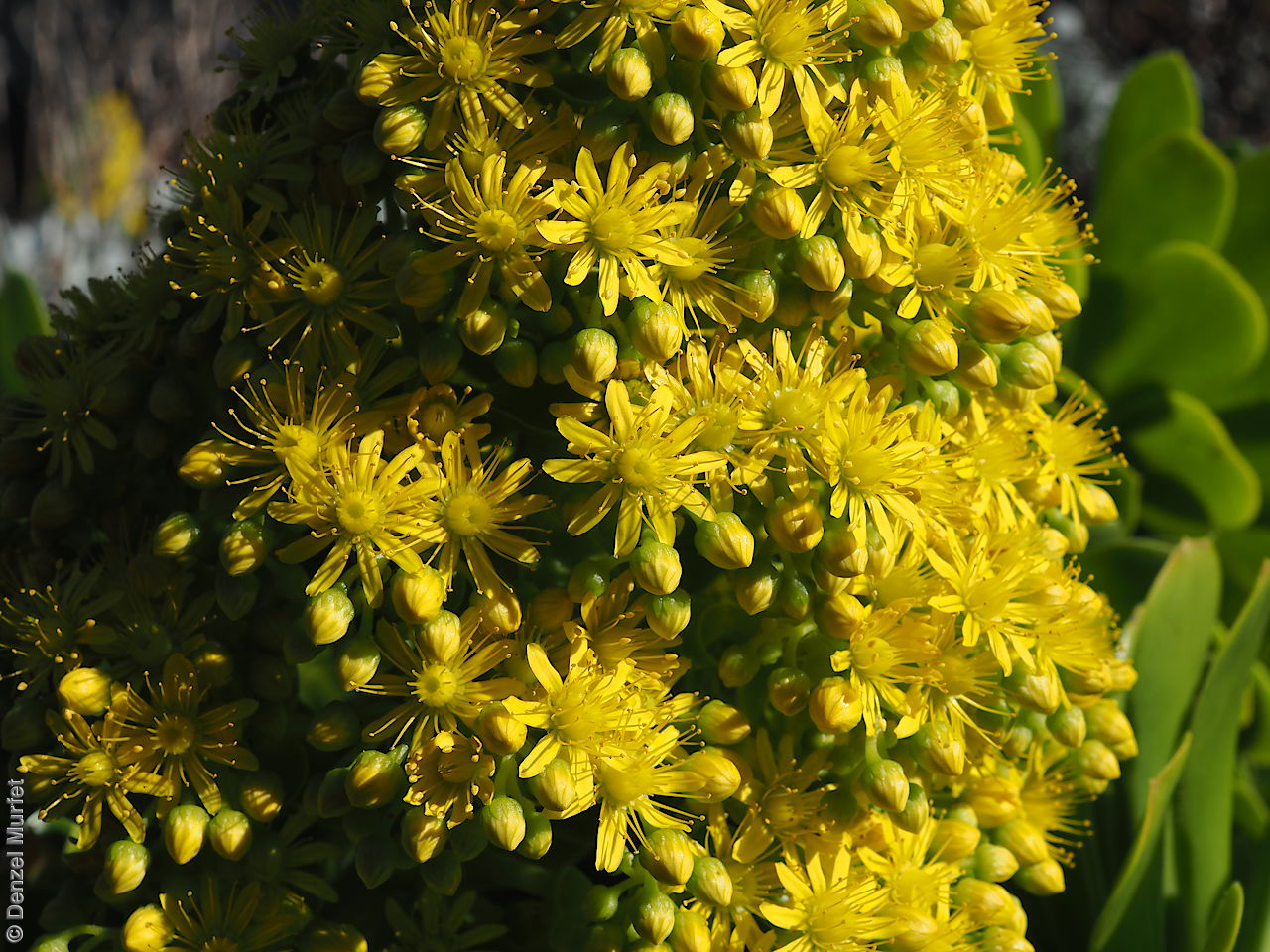
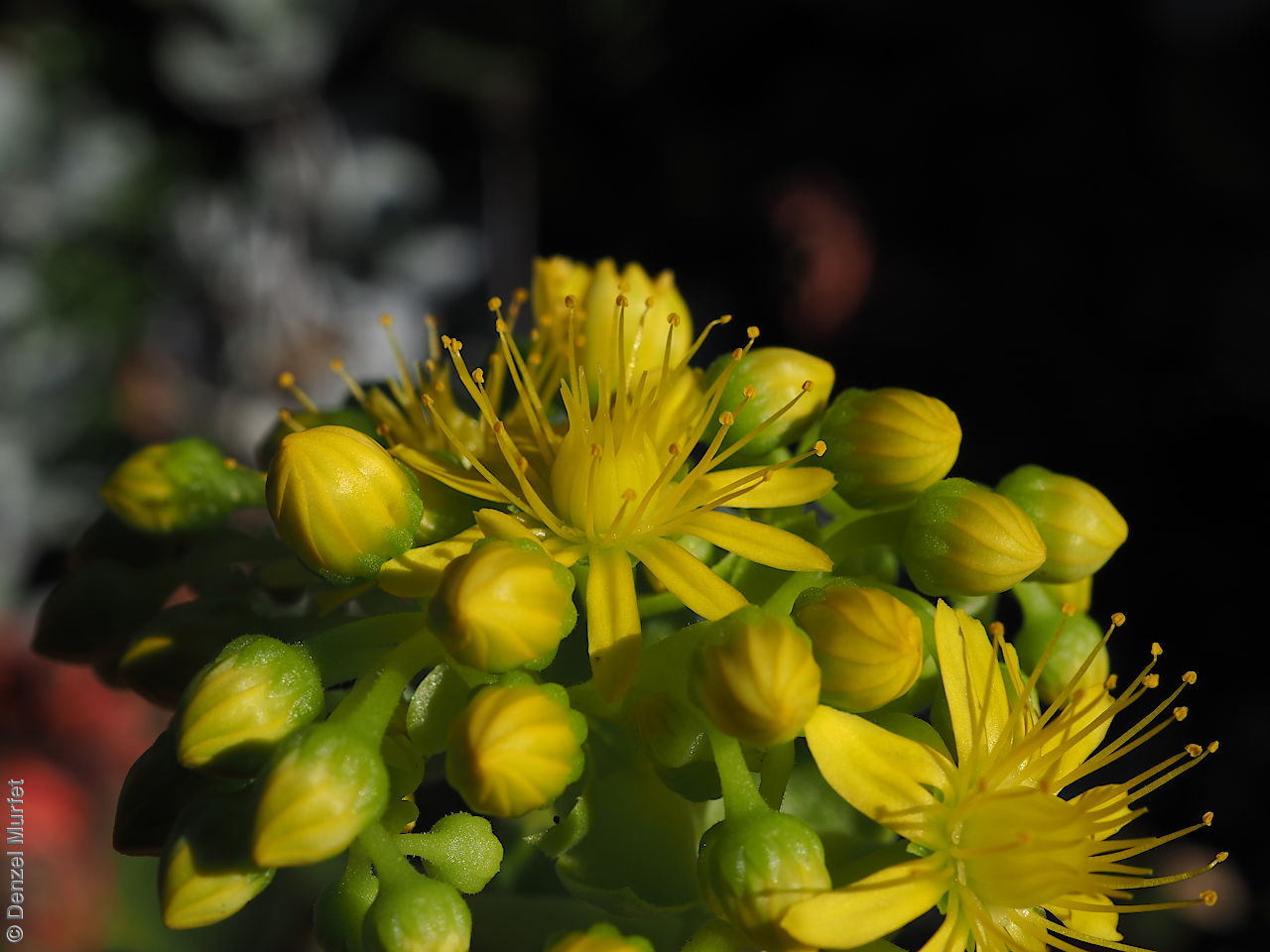
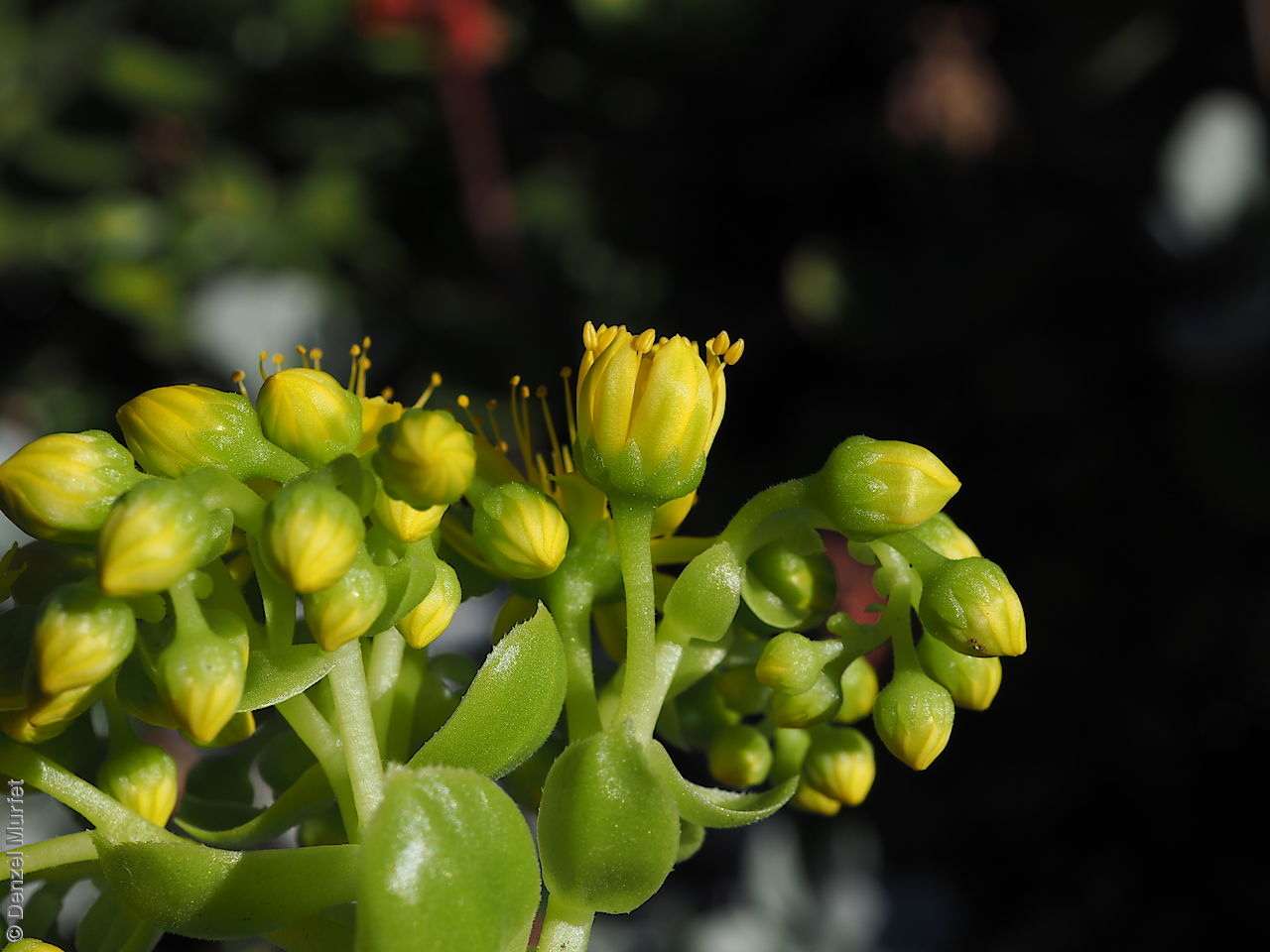
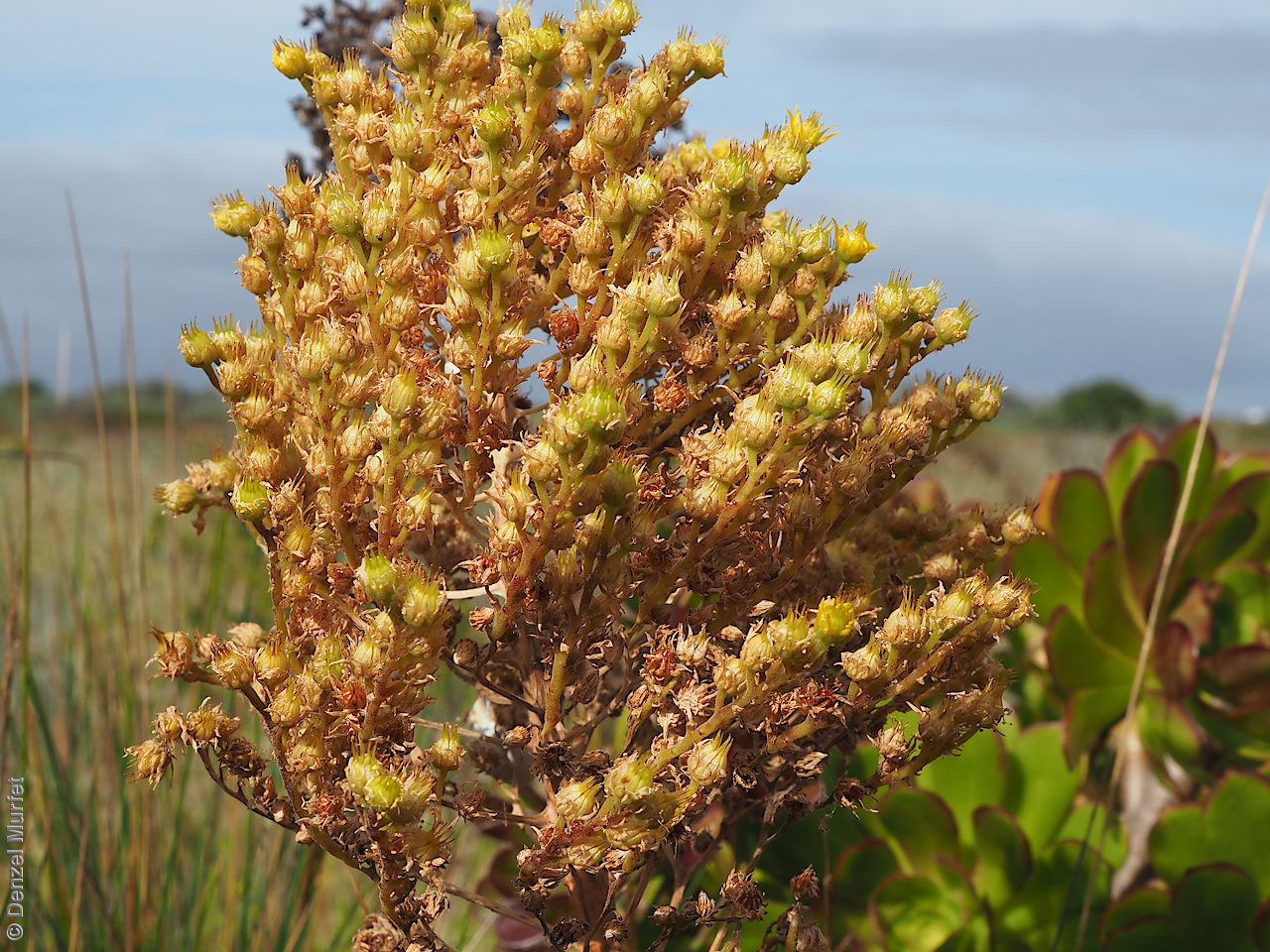

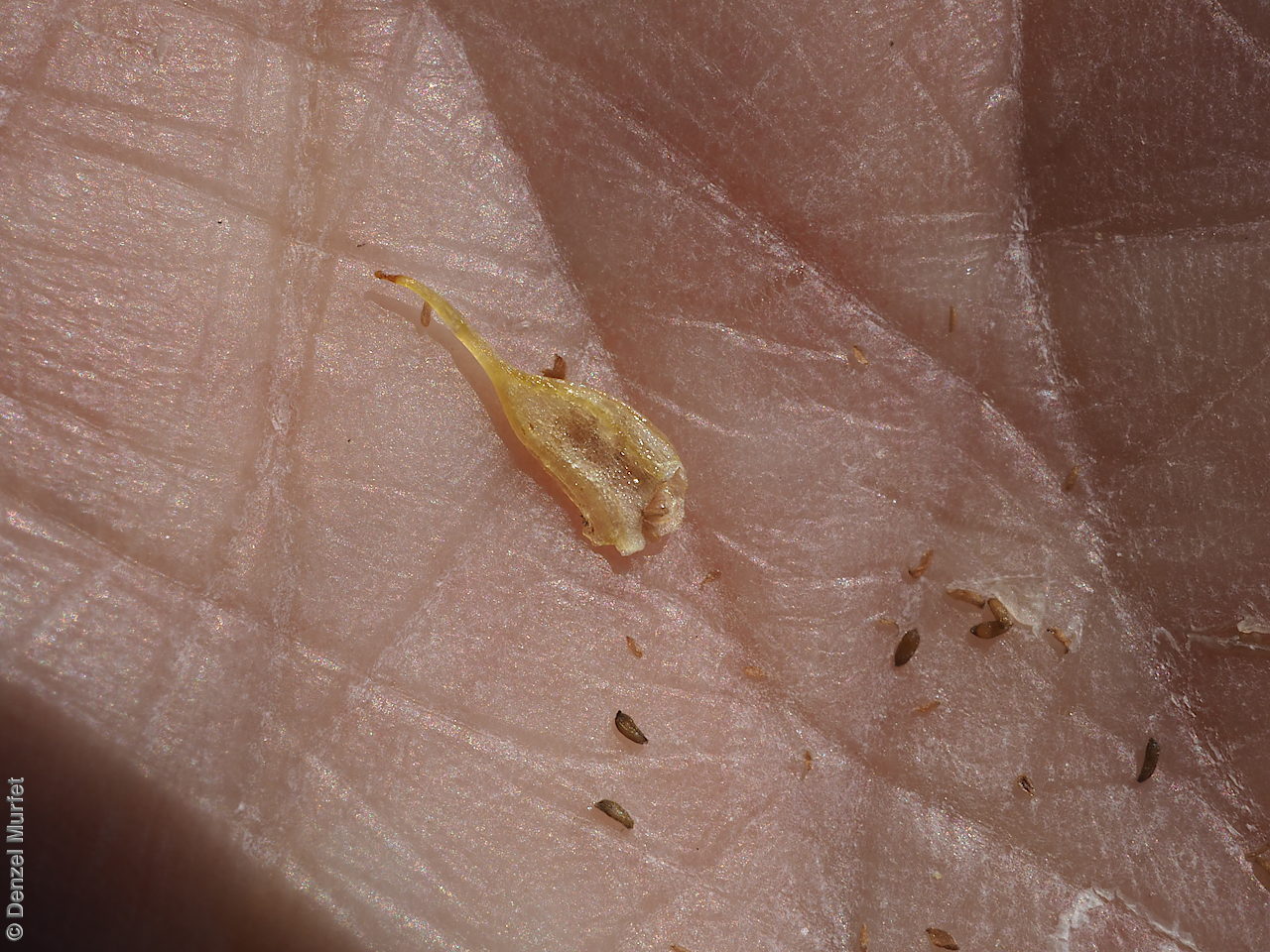


Botanical art
Prior names
Sempervivum arboreum
Etymology
Aeonium is an ancient name used by Dioscorides for a plant that is similar to Aeonium arboreumin the genus and is from the Greek 'aionos' meaning ageless or immortal. Arboreum from Latin 'arbor' meaning tree and the suffix '-Ä“tum', meaning place or like, referring to the species tree-like habit.
Distribution and status
Native to Atlantic Islands (Canary Islands) and northern Africa (west coast of Morocco) and naturalised along the coast in South Australia from the York Peninsula, Kangaroo Island to the South-east. Also naturalised in Western Australia, New South Wales, Victoria, Tasmania and many other parts of the world. Introduced. Common in South Australia. Common in Victoria. Uncommon in the other states.
Herbarium regions: Northern Lofty, Murray, Yorke Peninsula, Southern Lofty, Kangaroo Island, South Eastern, Green Adelaide
NRM regions: Adelaide and Mount Lofty Ranges, Northern and Yorke, South Australian Murray-Darling Basin, South East
AVH map: SA distribution map (external link)
Plant description
Open succulent shrub to 2 m tall with few or many branches that are robust, fleshy to 40 mm in diameter, covered in distinct leaf scars. Leaves are 15 cm long, oblong-oblanceolate, fleshy, green or brown-purple, with hairs along the margin, arranged in rossettes at the end of the branches. Inflorescences a large, conic to ovoid spike with dense bright yellow flowers, emerging from the center of the rosettes. Flowering between October and November and the species is a monocarpic species, meaning that it dies after flowering. Fruits are capsules with numerous segments containing a number of brown seeds.
Seed collection and propagation
Collect seeds between December to March. Pick by hand the mature spikes that are drying off and turning brown and the segments of the capsules care falling apart. Place the spikes in a tray to dry for a few weeks. Then rub the capsules gently by hand to dislodge the seeds. Use a sieve to separate the unwanted material. Store the seeds with a desiccant such as dried silica beads or dry rice, in an air tight container in a cool and dry place. Seeds are non-dormant, viable seed should germinate readily.